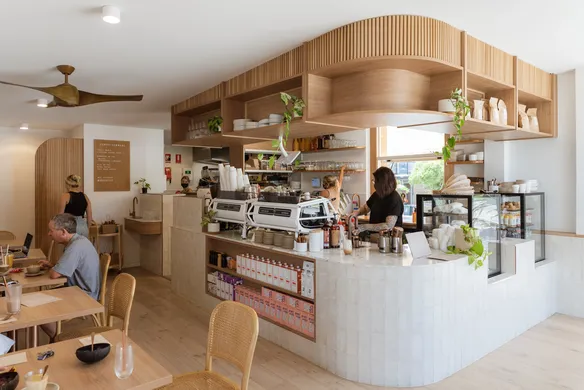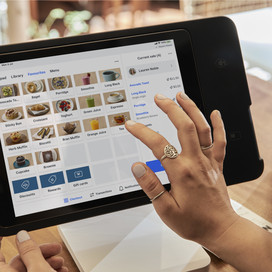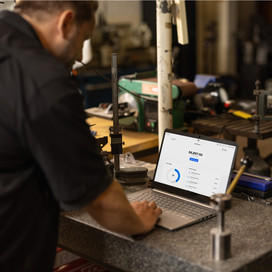Table of contents
Australians are known for many things, and our love for good coffee is one of them (especially if you live in Melbourne). As coffee culture spread from city laneways to suburban strips, many Aussies have made the leap from the 9–5 grind to full-time coffee brewing. Take Dave Rugendyke from Convoy Commune, who’s created a bustling community hub cafe in Newcastle and says he’s never looked back.
How much does it cost to open a cafe or coffee shop? That depends on your vision, location and size. Here’s a breakdown of estimated costs and things to keep in mind if you’re thinking about getting started.
Licences, permits and certificates
While it might seem simple enough to find a space, buy the necessary equipment and open up shop, there are a few legal boxes to tick before flipping the open sign.
To operate legally, you’ll need to meet a mix of local and state/territory requirements, which vary depending on your location and business model. The Australian Business Licence and Information Service (ABLIS) offers a free tool outlining exactly what’s required for your setup. Just answer a few quick questions about your cafe, and you’ll get a tailored list of licences, permits and regulations to consider.
Business licence and certificates
Start by registering your cafe with your local council and applying for a business licence. This ensures you’re operating within state food safety laws. You may also need additional certificates depending on your location and venue, such as zoning approvals, occupancy certificates, compliance sign-offs or fire safety clearances. These confirm your space is safe and fit for hospitality, with one-off costs typically ranging from $100 to $200 per permit.
Food licence and other operational licences
Every cafe needs a food licence, which is managed by your state or territory. The best way to check requirements is to visit the official government site where you plan to operate:
- Australian Capital Territory
- New South Wales
- Northern Territory
- Queensland
- South Australia
- Tasmania
- Victoria
- Western Australia
Depending on how you plan to run your cafe, you may need extra licences. For example, playing background music – even from a Spotify playlist – requires a music licence. A music licensing fee is priced by seating capacity, with monthly costs ranging from $35 to $185.
Insurance and risk management
Like any business, running a cafe means navigating a few risks. Hot equipment, spills, accidental damage or sudden closures can all impact operations. That’s where insurance helps protect your team, customers and equipment.
Some types of insurance are legally required:
- Public liability insurance: Covers injury or property damage suffered by customers while on your premises
- Workers’ compensation insurance: Covers employee injuries and lost wages – essential if you employ staff
Other policies worth considering:
- Contents or equipment insurance: Protects your cafe’s fit-out, stock and gear from theft or damage
- Product liability: Covers claims related to the food or drinks you serve
- Business interruption insurance: Helps recover lost income if you’re forced to close due to disruptions (e.g. flood, fire, power outage)
On average, small hospitality businesses spend $2,000–$5,000 annually on insurance, depending on their level of cover, size and provider. An insurance broker can help you tailor your policy so you’re covered where it counts and only paying for what you need. You can also reduce risk by setting up clear health and safety processes early, staying on top of equipment maintenance, and ensuring your cafe meets compliance standards – saving you stress (and costs) later on.
Professional services and legal fees
When starting a business, it’s wise to get legal and financial advice, especially when dealing with commercial leases, employment contracts and business structure setup. These early investments can help avoid expensive issues down the track.
A business advisor can help with strategy and planning, while a lawyer can review lease agreements or draft partnership documents if you’re starting the business with others. An accountant can guide you on tax obligations, BAS reporting and choosing the right business structure (e.g. sole trader, partnership or company).
Initial advice may cost $1,000–$3,000. Accounting software subscriptions can cost $50–$200 per month, depending on the features you need and whether it integrates with your point of sale and payroll tools.
Cost of acquiring a commercial space
How much does it cost to start a cafe and set up a space from scratch? Or should you rent a space or take over a running cafe instead? When it comes to finding a home for your coffee shop, there are three main paths you can take.
Buy a property
If you buy your own premises, you’ll have long-term security and full control over customising your setup. It’s a major investment, but if the site was previously a food business, it’ll likely already have suitable infrastructure like a kitchen, plumbing and a floor plan. Entry-level properties in suburbs or regional areas on realcommercial.com.au list from $200,000–$600,000, while those in prime locations can reach over $1.4 million. You’ll require an upfront deposit (usually 20%) and be responsible for outgoings like mortgage repayments, which can fluctuate with interest rates.
Lease a space
Leasing is common for first-time cafe owners. It’s more affordable upfront, though you’ll still need to budget for fit-out. Depending on the lease terms, there may be limitations on how much you can change, especially in heritage buildings or shopping centres. In most metro and suburban areas, small-to-medium cafes lease for around $800–$2,000 per week. Commercial leases usually run for at least five years, and you’ll typically need to pay a refundable security bond equal to 1–3 months’ rent.
Buy an existing cafe
If the thought of building a cafe from scratch feels daunting, buying one that’s already operating can fast-track your launch. An established cafe often comes with the essentials already in place: a commercial kitchen, compliant fit-out, branding, POS systems and a customer base. It can also give you a better sense of cash flow expectations, as you’ll have access to real financial records. That said, you might inherit a few unknowns – ageing equipment, staff issues or a poor reputation.
Prices for existing cafes vary widely. A small suburban cafe might sell for as little as $20,000, while larger, high-traffic or well-established cafes can fetch $300,000 and over. The sale price typically reflects current performance, location, lease terms and fit-out quality. If you’re considering this route, it’s important to do your due diligence. Request financial statements, check what’s included in the sale and find out which licences are transferable. Listings can be found on platforms like Seek Business, Commercial Real Estate and Business For Sale.
Renovations and interior design
Your cafe’s atmosphere is just as important as what’s on the menu – and much of that comes from how your space looks and feels. Renovation costs depend on what you’re working with. If the site was already a cafe, you might only need cosmetic changes like painting, replacing fixtures or updating flooring. These updates could cost $5,000–$10,000.
If you’re converting an empty or non-hospitality space, expect a much bigger job. You may need to install a commercial kitchen, plumbing, sinks, ventilation, bathrooms, benches and prep areas. A full renovation can range from $2,500–$4,000 per square metre.
Fitting out the dining area with tables, chairs, artwork, lighting and decor helps shape the customer experience and brings your brand to life. Depending on your aesthetic and seating capacity, you might spend $5,000–$30,000 to furnish your front-of-house.
Branding, signage and exterior design
First impressions matter, especially when walk-ins are a big part of your business. The way your cafe looks from the street can influence whether someone steps in. Signage, lighting, a menu board or chalkboard, window decals, planters and an outdoor seating setup all help create an inviting vibe.
Investing in professional brand design – including your logo, colour palette and visual tone – might cost between $1,000 and $5,000. Installing signage can add another $1,000–$5,000, depending on size, illumination and council permits. These details work together to make your cafe recognisable and consistent across every customer touchpoint.
Food and drink equipment
You’ll need essential equipment to prepare food and drinks, serve them up and store ingredients.
Brewing and serving great coffee is a non-negotiable for most Aussie cafes, so coffee equipment is high on the list. Expect to invest in these:
- Espresso machine: $7,000–$18,000
- Coffee grinder: $1,000–$3,000
- Blender (for iced or blended drinks): $500–$1,500
Your kitchen setup varies based on your menu and how your back-of-house is laid out, but common essentials include:
- Oven: $2,000–$5,000
- Cooktops or grills: $2,000–$6,000
- Microwave: $300–$1,000
- Toaster or sandwich press: $300–$1,000
- Fridge: $2,000–$5,000
- Freezer: $2,000–$5,000
- Dishwasher: $3,000–$6,000
You’ll also need tools to prep, plate, and pack up your food. Depending on your scale and service style, budget around $3,500–$9,000 for:
- Preparation tools: Chopping boards, knives, mixing bowls, tongs, utensils
- Servingware and tableware: Plates, bowls, cutlery, glassware, jugs, trays, platters
- Takeaway packaging: Cups, lids, compostable containers, napkins, bags, straws
Storing your food and ingredients is another consideration, with shelving, cupboards, ingredient tubs or display cabinets typically costing $1,500–$4,000. And finally, don’t forget your opening stock. The first big delivery of coffee beans, milk, bread, produce, condiments, pantry staples and cleaning supplies can add to $1,200–$2,500. It’s worth partnering with a reliable supplier and tracking usage closely in those early weeks to avoid food waste or out-of-stocks.
Business tools
Having the right point-of-sale (POS) system and tools in place makes running your cafe simpler from day one.
POS software for cafes enables you to take payments in person, online, and for takeaway or delivery. It also tracks sales trends, so you can see what’s popular and when. You can link your POS with inventory management software to receive low-stock alerts. Rostering tools help you manage your team’s shifts, while your staff can clock in and out, update their availability and request time off from their phones. A basic website is a must; it lets customers browse your menu, check your opening hours and order online.
Core Square POS software comes packed with features and costs $0 to start selling. As your cafe grows, you can add more tools, such as a loyalty program to reward coffee lovers and build a community of returning customers. To take card and mobile wallet payments, you’ll need an EFTPOS terminal, whether it’s handheld, on the countertop or part of an all-in-one register. Hardware like Square Reader starts from $65, so it’s easy to get set up without a big upfront spend. You might also add extra POS accessories like a receipt printer or cash drawer. Choose a setup that fits your service style and counter space.
Marketing costs
Marketing helps spread the word and build momentum for your launch, and it’s easy to start with free or low-cost initiatives. Sharing behind-the-scenes updates on social media showcases your space, team and menu while building local interest – all for free. You might also consider a flyer drop, opening-day specials or partnerships with nearby businesses to drive foot traffic.
If you’ve got more budget to play with, you could invest in professional photography, paid digital ads, SEO, or influencer collaborations to attract a wider audience. Costs for these tactics might range from $1,000 for a simple launch to over $10,000 for a full-scale campaign.
Staffing and labour costs
Hiring the right people plays an important role in your cafe’s success. Based on experience, skill and award rates, cafe workers usually earn:
- Floor staff: $25–$30 per hour
- Baristas: $25–$35 per hour
- Cooks or chefs: $29–$40 per hour
Staff training is also a factor – your new team will need to learn your service style, menu and systems. Onboarding, training days and trial shifts all come with time and wage costs. Other people-related costs might include recruitment ads, interviewing, setting up payroll or creating training materials. You might also consider providing uniforms, team meals and small perks to attract and retain quality staff.
Handling payroll yourself? Look for payroll software to help you track hours, manage superannuation and stay on top of Fair Work obligations.
Utility and operational costs
While budgeting how much to open a cafe, it’s worth factoring in ongoing expenses that keep your business running day to day. Although some of these won’t kick in until after you launch, setting aside funds means you’ll be ready for your first round of bills.
Electricity, gas and water usage depend on your kitchen setup, appliances and trading hours. Most cafes spend $800–$1,500 per month on electricity and gas, with water usage adding another $200–$500. Some providers may charge a small connection fee for setting up these services.
A stable internet and phone service are important; they ensure your POS, online and phone orders stay up and running. A business-grade connection usually costs $100–$250 a month. If the internet or power goes down, Square sellers can still take offline payments and continue serving customers without interruption. Other operational costs to budget for include waste disposal, pest control, cleaning and laundry services, and equipment maintenance (around $700–$1,800 per month in total).
Funding options for opening a cafe
Not everyone has the cash upfront to fund a full cafe setup – and that’s totally normal. One common funding option is a small business loan from a bank, which typically involves fixed monthly repayments plus interest. A more flexible alternative is a merchant cash advance, where repayments flex with your daily sales – you pay more when business is strong, and less when it’s quiet.
Government grants and startup programs may be available, especially if your cafe creates local jobs or offers training. These schemes often require an application process and aren’t guaranteed, but are a valuable boost. You might also fund your cafe by using personal savings, borrowing from friends or family, or applying to a business accelerator program. Whatever you choose, it helps to speak to a financial advisor and create a repayment plan strategy that supports your long-term goals.
Average total startup cost summary
How much does it cost to open a coffee shop in Australia? It all depends on your location, vision and service style. To help you plan, here’s a coffee shop cost breakdown Australian sellers can use as a starting point for their budget.
| Category | Cost |
| Licences, permits and certificates | $400–$1,000 |
| Insurance | $2,000–$5,000 per year |
| Professional and legal fees | $1,000–$3,000 |
| Acquiring a commercial space |
$200,000–$600,000 to buy a property $800–$2,000 per week to lease $20,000–$300,000 to buy an existing cafe |
| Renovations |
$5,000–$10,000 total for minor works $2,500–$4,000 per sqm for major works |
| Interior design | $5,000–$30,000 |
| Branding, signage and exterior design | $2,000–$10,000 |
| Food and drink equipment | $25,000–$65,000 |
| Business tools | Free to start using Square POS software; hardware from $65 |
| Marketing | $1,000–$10,000 |
| Staffing and labour |
$25–40 per hour per staff member $55,000+ per year per manager |
| Utility and operational costs | $1,800–$4,000 per month |
FAQs: Starting a Cafe in Australia
How much does it cost to open a cafe in Australia?
Opening a cafe in Australia usually costs between $100,000 and $500,000, depending on where you set up and how big you want it. This includes everything from permits and equipment to staff wages and marketing. Of course, you can start smaller or splash out more, but that’s a good ballpark to keep in mind when planning your budget.
Are cafes profitable in Australia?
Yes, many cafes in Australia can be profitable, especially if you choose a great location, serve quality coffee and food, and build a loyal local following. Profitability comes down to managing your costs well, keeping customers coming back and staying up-to-date with what people want. Like any business, it takes hard work and good planning, but with passion and smart choices, your cafe can definitely succeed.
How do I take payments at my cafe?
Taking payments is easier than ever with a range of options. Most cafes use a point-of-sale (POS) system that handles cash, card, and contactless payments like Apple Pay or Google Pay. Popular choices like Square let you start for free with simple hardware from $65, and you can upgrade as you grow. Ensure your setup suits your style, whether you’re doing quick takeaway orders or cosy sit-down service.
![]()














